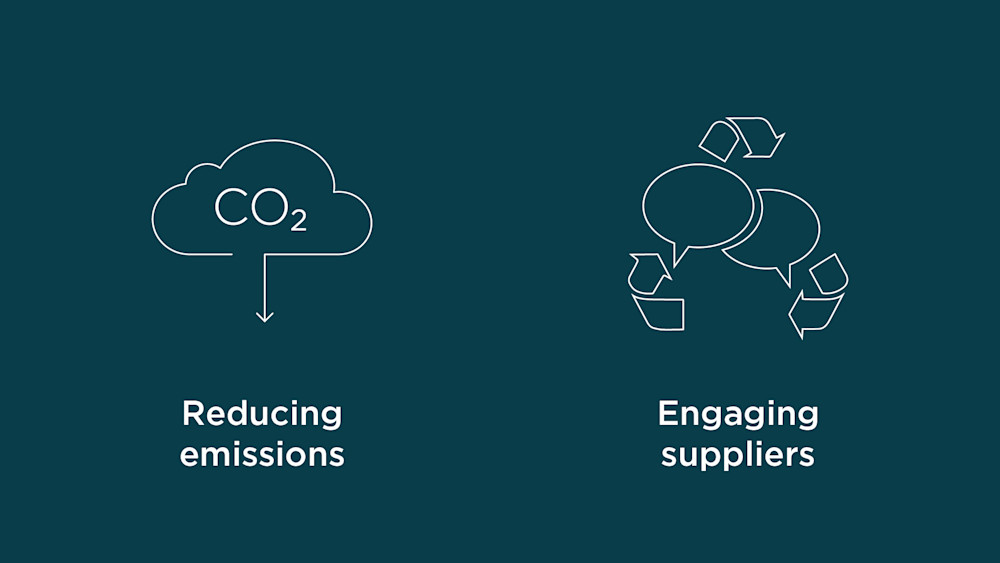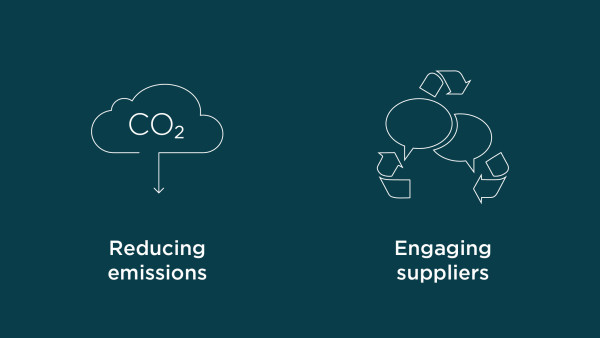
Condé Nast's Sustainability Strategy
Our Sustainability Vision
In 2019, we published our Global Sustainability Statement. In keeping with our commitment to transparency, we are now publishing the first GHG and Materials Assessment findings of 12 Condé Nast markets.
With a clear understanding of our environmental performance across our operations, we developed our first five-year sustainability strategy (2020 – 2025) confirming our intention to drive innovation and actionable change inside our organization, across the fashion and publishing industries and beyond.
Additionally, we're one of the first publishing companies to begin accounting for the environmental footprint of our digital value chain, including emissions of digital content consumption.
Our Commitments
Our first five-year sustainability strategy (2020 – 2025) is structured in three phases, which involve incremental improvements across four key areas:
Reducing our emissions and offsetting when reduction is not possible. We aim to achieve carbon neutrality by 2030, starting with a 20% reduction in corporate emissions and 10% reduction in supply chain by the end of 2021.
Encouraging partners across our supply chain to foster a more sustainable publishing sector.
Identifying and using more sustainable materials across our production process. We will transition to 100% internationally certified paper by the end of 2021 and will eliminate all fossil-based, non-recyclable plastic packaging from publications across 12 Condé Nast markets by 2025.
Championing a more sustainable corporate culture while informing and inspiring our audiences. We aim for our brands to be recognised as leading advocates for sustainability, setting higher standards for reporting on issues of climate change and sustainable fashion.
To meet our commitments and ensure tangible, long lasting change in the way we operate, we aim to fully embed our sustainability strategy within our key business processes. To achieve this necessary change, we have identified four key focus areas where we see the need for transformation over the next five years.


Our approach is based on incremental changes and improvements over three phases:
Phase One: We will work to establish a foundation for our sustainability transformation across all business functions and operations; set public targets and develop a structured reporting process for accountability and delivery while integrating sustainability considerations into daily workflow.
Phase Two: Aim to integrate sustainability best practice processes across business functions such as procurement and print production, while increasing our sustainability ambitions.
Phase Three: Continue to lead by example, setting industry agenda and identifying high-level, effective opportunities for change and innovation in the fashion and publishing industries.


Ambitions for Phase One
1. Reducing emissions Condé Nast will aim to reach carbon neutrality by 2030 by reducing our emissions and offsetting when reduction is not possible. We will also work closely with our suppliers to ensure a reduction of emissions across our supply chain while simultaneously reducing our corporate emissions by 20%.
Key Actions:
- Conduct ongoing GHG data monitoring and preliminary reduction target-setting
- Conduct a GHG assessment every two years
- Transition to energy efficiency programs and green electricity purchase
- Optimize the use of virtual meeting infrastructure
- Explore alternative travel arrangement
- Explore international environmental certification
2. Engaging suppliers and working with partners Revise procurement approach and encourage suppliers to align with Condé Nast’s sustainability objectives, champion industry-led initiatives to foster supply chain transformation, encourage our licensees to adopt environmental best practices.
Key Actions:
- Revise our procurement approach to identify suppliers that share our sustainability objectives
- Work with industry peers and key suppliers to identify shared sustainability objectives and areas of collaboration
- Conduct systematic reviews on sustainability credentials and supply chain efficiency (e.g. print, event management, photoshoot, video production, etc)
- Prepare for supply chain transformation and transition to more sustainable materials
3. Using more sustainable materials Improve the sustainability credentials of materials we use in our production process, ensuring we consider and adopt high-performing alternative materials while encouraging licensees to adopt similar standards.
Key Actions:
- Conduct annual comprehensive material audits
- Ensure 100% of paper used is internationally certified
- Progress our commitment to eliminate all non-recyclable, fossil-based packaging materials
4. Becoming a voice for change Firmly position Condé Nast and its brands as leading advocates for sustainability, with industry peers and audiences while strengthening expertise at corporate and editorial levels to further enhance our credibility and authority as a trusted voice in the public sustainability debate.
Key Actions:
- Launch of a global employee council for sustainability to champion corporate culture change across our markets
- Publish Condé Nast’s GHG emissions results and Five-Year Sustainability Strategy
- Launch and promote the adoption of The Sustainable Fashion Glossary, the authoritative global resource for understanding sustainable fashion and the fashion industry’s role in the climate emergency.
- Roll out sustainability policies and employee trainings
- Continue to support institutional partnerships for multi-stakeholder collaborations, such as the UN, World Economic Forum and the Ellen MacArthur Foundation.
Looking forward
At Condé Nast we are uniquely positioned to drive real transformation across the publishing, media and fashion industries. We will continue to monitor, adapt and improve the way we operate as a business to meet our environmental ambitions and inspire our audiences, peers and employees to take positive climate action.




